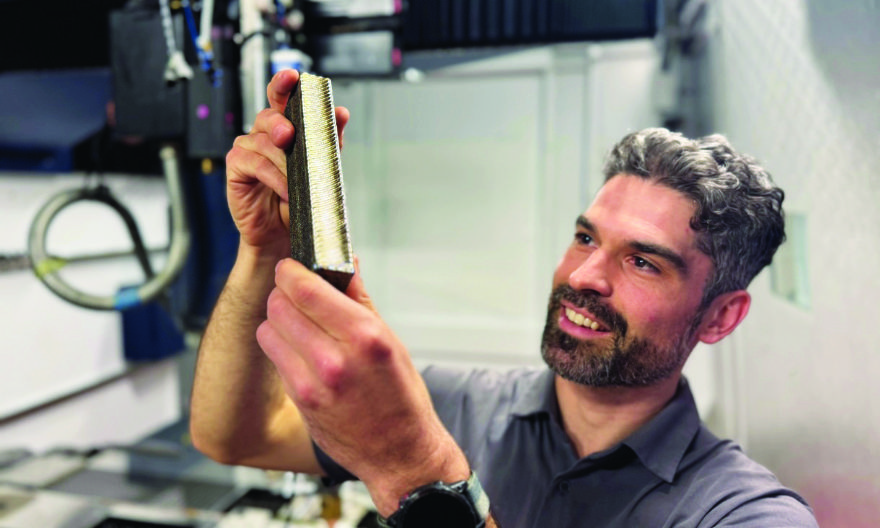
Engineers from
RMIT University in Melbourne, Australia, have produced a new type of 3-D printed titanium that uses readily available and cheaper alternative materials ‘to replace the increasingly expensive vanadium and is markedly cheaper than commonly used titanium alloys’. The RMIT team has filed a provisional patent, which has also been outlined in
Nature Communications, as the team considers commercial opportunities to develop the new low-cost approach for the aerospace and medical device industries.
Ryan Brooke, the study lead author at RMIT’s Centre for Additive Manufacturing (RCAM), said testing of their alloy showed improved strength and performance compared to standard 3-D printed titanium alloys (Ti-6Al-4V). Mr Brooke, who has just accepted a Research Translation Fellowship at RMIT to investigate the next steps of commercialising the technology, added that the area of 3-D printed titanium alloys was ripe for innovations.
He said: “3-D printing allows faster, less wasteful, and more tailorable production, yet we are still relying on legacy alloys like Ti-6Al-4V that doesn’t allow full capitalisation of this potential. It is like we have created an aeroplane and are still just driving it around the streets. New types of titanium and other alloys will allow us to really push the boundaries of what is possible with 3-D printing and the framework for designing new alloys outlined in our study is a significant step in that direction.
Mr Brooke continued: “Our latest study outlines a time- and cost-saving method to select elements for alloying that take advantage of emerging 3D-printing technology. Moreover, our work provides a clearer framework for predicting the printed grain structure of metallic alloys in additive manufacturing (AM) and has already been used to achieve impressive results, with the team’s alloy — although not presented in the study for commercial reasons — is 29% cheaper to produce than standard titanium. The metal also 3-D prints more evenly, avoiding the column-shaped microstructures that lead to the uneven mechanical properties found in some AM alloys.”
He concluded: “By developing a more cost-effective formula that avoids this columnar microstructure, we have been able to not only produce titanium alloys with a uniform grain structure but also with reduced costs — and made them stronger and more ductile.”